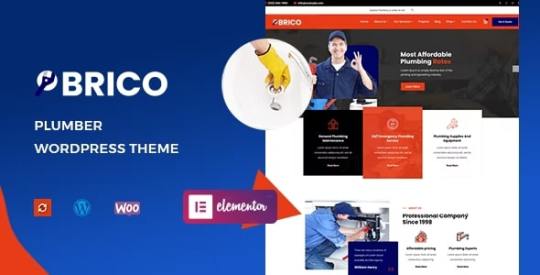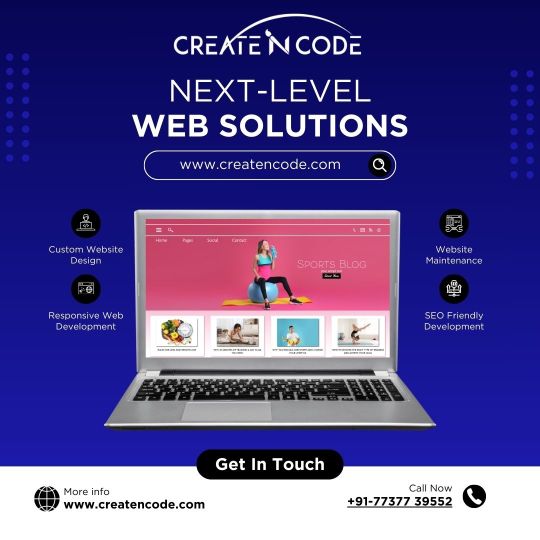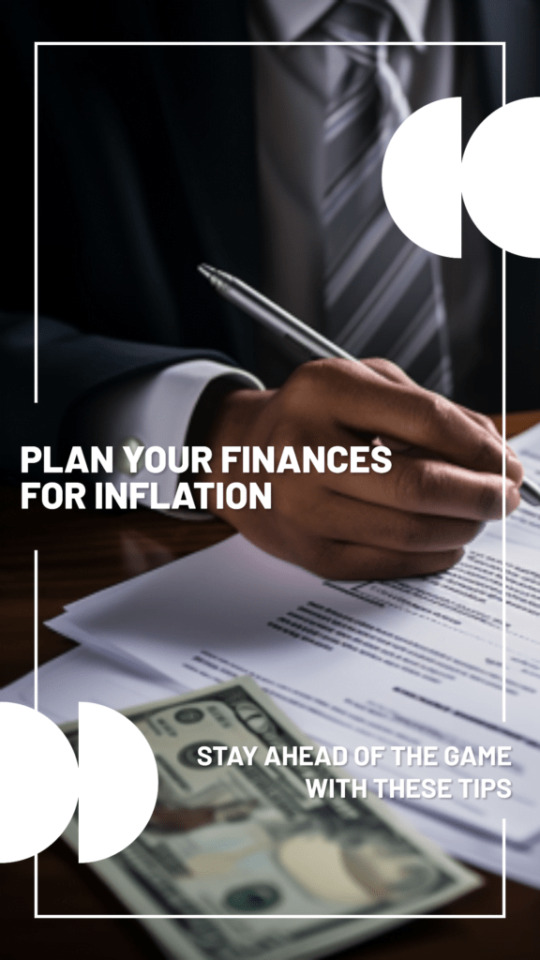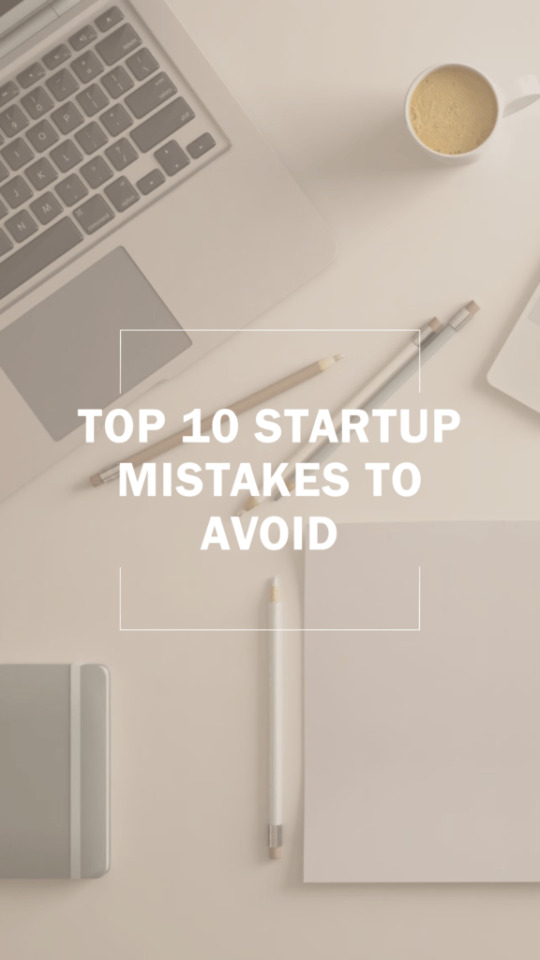#home design WordPress theme
Explore tagged Tumblr posts
Text
Is GB Architect – Architecture Agency WordPress Theme the Best Choice for Architects and Designers?
When it comes to running an architecture firm, your website isn't just a digital business card—it's a showcase of your design philosophy, attention to detail, and project execution capabilities. In a competitive landscape, an average website simply won't do. That’s where the GB Architect – Architecture Agency WordPress Theme comes in.
Tailored specifically for architects, interior designers, and engineering consultants, this theme is built to emphasize visual appeal, clear communication, and seamless functionality. But is it the best choice for your firm? Let’s break it down and see what makes this WordPress theme a powerful tool for professionals in the built environment industry.
Designed with Architectural Aesthetics in Mind
Architecture is a visual discipline, and your website should reflect that. The GB Architect WordPress Theme is crafted with a clean, modern, and minimalist design that draws attention to your work—not the interface. Every element, from image galleries to service sections, is laid out to support visual storytelling.
Whether you're showcasing residential blueprints, commercial builds, or urban planning projects, this theme’s layout ensures your content is the star of the show.
Highlight Your Portfolio with Elegance
The success of an architect often hinges on the ability to present past projects compellingly. This theme includes built-in portfolio templates that let you organize your work in sleek, filterable grids and masonry layouts. High-resolution photos load quickly and look sharp on every screen size.
Visitors can click into individual project pages to view detailed descriptions, specs, timelines, and outcomes—an ideal setup for impressing prospective clients or collaborators.
Want to see how this works in action? Explore the Architecture Agency WordPress Theme and test out the portfolio feature live.
Intuitive Navigation for a Seamless User Experience
GB Architect prioritizes user experience through intuitive navigation. Sticky menus, smooth scrolling, and clearly marked sections help users find what they’re looking for without friction. Whether someone is browsing your latest projects, reading about your firm, or looking to contact you, the theme makes the journey effortless.
In a field where professionalism and clarity matter, this usability-focused design enhances your reputation and builds trust with site visitors.
Fully Customizable to Fit Your Brand
No two architecture firms are exactly alike—and your website should reflect your unique identity. GB Architect is fully customizable through the WordPress Customizer and drag-and-drop page builders like Elementor. Adjust typography, change colors, upload your logo, and rearrange sections to make the theme truly your own.
You don’t need to touch a single line of code. The user-friendly backend puts full control in your hands, making it perfect for architects who want a polished site without hiring a developer.
Mobile-Responsive and Retina Ready
In 2025, your website must perform flawlessly on mobile devices. The GB Architect theme is 100% responsive, ensuring your portfolio and service pages look amazing on smartphones, tablets, and desktops alike.
Its retina-ready design also means your high-resolution project photos will appear crisp and professional, enhancing your credibility and visual impact.
Built for Speed and SEO
Speed is more than convenience—it’s an SEO ranking factor. GB Architect is optimized for performance, with clean code and lightweight elements that ensure fast loading times. It also supports popular caching plugins, further enhancing site speed.
SEO best practices are built in as well. Proper HTML structure, schema markup, and plugin compatibility give your site the technical backbone needed to climb the search rankings.
Effective Lead Generation Features
Your website isn’t just a portfolio; it’s a business tool. GB Architect includes multiple lead generation components like quote request forms, contact sections, and prominent call-to-action (CTA) buttons.
You can strategically place CTAs throughout your homepage, about page, and service areas to encourage inquiries and consultation bookings. It’s an essential feature for growing firms looking to attract serious clientele.
Team and Testimonial Sections to Build Authority
Architecture is as much about trust as it is about talent. The theme includes team member sections where you can introduce your architects, engineers, and designers with bios, photos, and specialties. It also offers stylish testimonial layouts where satisfied clients can vouch for your expertise.
Together, these features help humanize your brand and establish credibility—key to converting web traffic into client relationships.
Blogging Capabilities to Enhance Visibility
Want to share your thoughts on sustainable architecture, zoning laws, or design trends? The built-in blog functionality makes it easy to publish expert content. Not only does this position you as an authority, but it also boosts your SEO by keeping your site fresh and keyword-rich.
Consistent blogging can attract new traffic, build a loyal audience, and convert readers into leads.
One-Click Demo Import and Hassle-Free Setup
Don’t want to start from scratch? The GB Architect theme includes a one-click demo import feature that gets your site looking like the preview in seconds. Simply replace the sample content with your own and you’re ready to launch.
Whether you’re a seasoned WordPress user or a complete beginner, the quick setup process makes this theme highly accessible.
Final Verdict
So, is the GB Architect – Architecture Agency WordPress Theme the right fit for your firm? If you value modern aesthetics, performance optimization, easy customization, and the ability to showcase your work with elegance, the answer is a resounding yes.
Architects need more than a website—they need a platform that reflects the sophistication of their work. GB Architect delivers on all fronts, helping you establish a commanding digital presence in a competitive industry.
Explore the Architecture Agency WordPress Theme and take the first step toward transforming your firm’s online identity.
#architecture agency WordPress theme#architectural firm WordPress template#building design WordPress theme#architecture studio WordPress site#construction design WordPress template#interior architecture WordPress theme#modern architect WordPress site#residential design WordPress theme#urban planning WordPress template#architecture company WordPress site#architect WordPress portfolio#home design WordPress theme#architectural agency WordPress template#design firm WordPress site#blueprint WordPress theme#architect showcase WordPress template#architecture planning WordPress design#exterior design WordPress theme#structural design WordPress template#real estate architecture WordPress site
0 notes
Text
🚿 Brico - Perfect WordPress Theme for Plumbers! 🔧

Brico is designed for plumbers, handyman services, and repair businesses. With a modern layout, easy customization, and mobile-friendly design, your website will stand out from the competition!🏗️ 🔄
Key Features:
💙 Build with ease 💙 Super fast 💙 Lifetime updates 💙 One-click demo import 💙 Speed optimized 💙 SEO-friendly
🔹 Your plumbing business deserves the best! 🚀
Get it now: ► 👉 https://1.envato.market/XxEPxo
We provide high-quality SEO-friendly website themes and templates with 100% responsive design.
Explore it: ► 👉 https://zozothemes.com
1 note
·
View note
Text
Affordable WordPress Website Design Services for Any Business
Get a professional and responsive WordPress website that fits your budget and meets your business goals.
#wordpress design agency#wordpress funeral theme#virtual assistant wordpress theme#home decor wordpress theme#swimming pool wordpress themes#craft beer wordpress theme#evisa - immigration and visa consulting wordpress theme#wordpress soap
0 notes
Text
What is a Website? A Complete Beginner’s Guide

In today’s digital age, having an online presence is not a luxury — it’s a necessity. Whether you're a business owner, content creator, or just someone curious about the web, understanding what a website is and how it functions is essential. In this guide, we’ll cover everything you need to know about websites, their components, types, benefits, and how to create one.
What is a Website?
A website is a collection of publicly accessible web pages that are linked together and share a single domain name. These pages are hosted on a web server and can include text, images, videos, forms, and other elements that users interact with online.
In simpler terms, a website is your virtual space on the internet — like your home or office in the digital world. It allows you to communicate, sell, educate, entertain, or showcase anything to a global audience.
Why is a Website Important Today?
In a world dominated by smartphones, search engines, and social media, a website acts as your central hub online. Here's why it’s important:
Visibility: A website helps you appear in search results when people look for your products, services, or information.
Credibility: A professional-looking site builds trust among your audience.
Accessibility: Your website is available 24/7, allowing customers to reach you anytime.
Marketing: It's the foundation for all your digital marketing efforts.
Sales: With e-commerce, your website can directly generate revenue.
Core Components of a Website
Every website has several key components that make it function properly:
1. Domain Name
This is your site’s address (e.g., www.digitalcreator.org.in). It’s what users type in their browser to visit your site.
2. Hosting Server
Web hosting stores your website’s data and serves it to users when requested.
3. Content Management System (CMS)
A CMS like WordPress, Joomla, or Shopify makes it easy to build and manage content on your website without coding.
4. Web Pages
These include the homepage, about us, contact, services, blog, etc., that make up your website.
5. Navigation
Menus and internal links guide visitors through your website.
Types of Websites
Different websites serve different purposes. Here are some common types:
1. Business Website
Used by companies to promote services, share information, and connect with clients.
2. E-commerce Website
Allows users to buy and sell products online. Examples include Amazon and Flipkart.
3. Portfolio Website
Ideal for creative professionals to showcase their work.
4. Blog or Personal Website
Used by individuals to share ideas, stories, or niche content regularly.
5. Educational Website
Used by schools, institutions, or educators to provide learning materials.
6. Non-profit or Government Website
Focused on delivering information and services to the public.
How to Create a Website (Step-by-Step)
Creating a website doesn’t require you to be a tech expert. Follow these steps:
Step 1: Choose a Domain Name
Pick a short, relevant, and memorable domain name. Make sure it reflects your brand or purpose.
Step 2: Get Web Hosting
Choose a reliable hosting provider like Bluehost, SiteGround, or Hostinger.
Step 3: Select a CMS or Website Builder
Use platforms like WordPress, Wix, or Shopify to start building your website.
Step 4: Design Your Website
Choose a theme or template. Customize colors, fonts, and layout to match your brand.
Step 5: Add Content
Create and publish pages like Home, About, Services, and Contact. Use quality visuals and optimized text.
Step 6: Optimize for SEO
Use keywords (like website) naturally, optimize images, and ensure fast load speed.
Step 7: Launch and Promote
Once satisfied, make your website live. Share it on social media and start your SEO or ad campaigns.
Best Practices for a Great Website
Responsive Design: Ensure your site works well on all devices.
Fast Loading Speed: Use compressed images and optimized code.
Clear Navigation: Make it easy for users to find what they need.
Secure (HTTPS): Use an SSL certificate to protect data.
Call-to-Action (CTA): Guide visitors toward actions like “Buy Now” or “Contact Us.”
Examples of Great Websites
A well-designed and fully functional example is www.digitalcreator.org.in. It demonstrates how a website can showcase services, build trust, and attract new clients efficiently.
LSI Keywords to Keep in Mind
While writing or optimizing your website, include these Latent Semantic Indexing (LSI) keywords to enhance search performance:
Web design
Online presence
Website development
Internet site
Web page
Digital platform
Domain and hosting
CMS (Content Management System)
Website builder
E-commerce site
Frequently Asked Questions (FAQs)
1. What is the purpose of a website?
A website helps individuals or businesses share information, sell products, provide services, or connect with others online.
2. How much does it cost to build a website?
Costs vary based on design, features, and hosting. Basic websites can cost as low as ₹3,000–₹10,000, while advanced ones may go up to ₹1 lakh or more.
3. Do I need coding skills to create a website?
No. Tools like WordPress or Wix allow you to build a full website without writing any code.
4. How long does it take to build a website?
A simple website can be built in 1–2 days. More complex sites may take a few weeks.
5. What makes a website successful?
A successful website is user-friendly, fast, mobile-optimized, secure, and offers valuable content with clear calls-to-action.
Conclusion
Understanding what a website is is the first step toward establishing your digital footprint. Whether you're planning to launch a personal blog, online store, or professional portfolio, your website will serve as the foundation of your online presence.
If you're ready to build or improve your website, visit www.digitalcreator.org.in — your one-stop destination for digital marketing and website development solutions.
2 notes
·
View notes
Text
Best Web Design and Hosting for Small Business
User experience (UX) is a top priority for a successful small company website. This features responsive layouts that guarantee smooth surfing across devices, clear information hierarchy, and easy navigation. Websites should captivate users with eye-catching graphics, excellent photos, and interactive features that are consistent with the brand's identity. For small businesses looking to establish a strong online presence, investing in quality web design and reliable hosting is paramount.
Creating a powerful brand identity is essential. In order to create a unified image that makes an impression on visitors, this entails using logos, colors, and font consistently throughout the website. Retaining user interest also requires interesting material that speaks to the demands of the target audience, including educational blog entries and captivating product descriptions.
How to Make a Website for a Small Business
Select a User-Friendly Website Builder: Website construction is made easier by the intuitive interfaces of platforms like as Squarespace, Shopify, and Wix. Because these builders frequently have drag-and-drop capabilities, consumers can alter their websites without knowing any code23.
Choose a Domain Name and Register It
A memorable domain name is crucial for internet branding and represents your company's identity. Make sure it is pertinent to your services and simple to spell.
Select a Trustworthy Web Hosting Provider
The performance of the website depends on the hosting provider selection. Important things to think about are:
Uptime Promise: To reduce downtime, look for hosts that have 99.9% uptime.
Loading Speed: To improve user experience, try to keep page load times under three seconds.
Features of Security: To safeguard your site2, be sure the server offers SSL certificates, frequent backups, and virus detection.
Customer service: For prompt problem solving, round-the-clock assistance can be essential.
Create the Visual Identity for Your Website
Make an eye-catching layout that complements the style of your brand. Make use of top-notch photos and keep design components consistent.
Plan the Navigation and Site Structure
Logically arrange your information to make it easier to navigate. A site with a clear structure makes it easier for people to find information fast.
Create Key Pages
Home, About Us, Services/Products, Blog, and Contact Us are all important pages. Every page should contribute to the general objectives of the website while fulfilling a distinct function.
Top Web Design Platforms for Small Businesses
WordPress:
Flexible and customizable with thousands of plugins and themes.
Ideal for businesses looking for scalability and SEO features.
Wix:
Drag-and-drop functionality for easy website creation.
Suitable for businesses without technical expertise.
Squarespace:
Modern templates and built-in e-commerce features.
Perfect for visually appealing designs.
Shopify:
Best for small businesses focused on e-commerce.
Features include inventory management, payment integration, and analytics.
Weebly:
Affordable and user-friendly.
Ideal for small businesses needing basic functionality.

#Best Web Design and Hosting for Small Business#website#website design#seo services#digital marketing#web design#web development#usa news#usa
3 notes
·
View notes
Text
Level Up Your Living Room with These 10 Luxury Sofa Brands ✨

Amazing Home Design
Ready to give your living room the royal treatment? These luxury sofa brands are the epitome of comfort, style, and craftsmanship:
Restoration Hardware: Classic designs with a modern twist.
Roche Bobois: Bold, statement pieces with a French flair.
B&B Italia: Italian design icons that are both timeless and contemporary.
Edra: Unconventional and playful designs that push the boundaries of furniture.
Minotti: Sophisticated and elegant sofas with a focus on quality materials.
Flexform: Understated luxury with a focus on comfort and functionality.
Poliform: Modular sofas that can be customized to fit any space.
Ligne Roset: Iconic designs that are both stylish and comfortable.
Cassina: A heritage brand known for its collaborations with legendary designers.
Vitra: Modern classics with a focus on sustainability and innovation.
#luxuryfurniture#interiordesign#livingroomdecor#sofas#homedecor#luxuryhomes#designinspiration#furnituredesign#highendfurniture#moderndesign
2 notes
·
View notes
Text

WordPress Website Security: Dos and Don'ts.
Today we will talk about exclusionary aspects that we must take care of.
Excluded:
. Do not install unnecessary plugins
. Do not download themes or plugins from unknown sources
. Do not use the default username (eg "admin")
. Common passwords that can be guessed cannot be used
. Keep the wp-config.php file secure
. Can any file before uploading if necessary
Maintaining WordPress website security is a lot like ensuring home security. Taking the right steps can protect your site from hackers and keep it secure.
If you have any questions, you can comment.
thank you
Pallab Bepary
WordPress Website Designer (Elementor)
#digital marketing#wordpress#pallabbepary#marketing#pallab#wordpressexpert#elementor#ecommerce#business growth#usa#uk#canada#australia
2 notes
·
View notes
Text
Transforming Homes: Exploring the Best Residential Interior Design Trends in Bhubaneswar
Full Interior Design Solutions in Bhubaneswar You can take the following actions if you’re looking for domestic interior design services in Bhubaneswar: Research and Idea Gathering: Start by looking into different themes and types of interior design that you like. Use publications, websites, social media sites, and even nearby interior design projects as sources of inspiration. This will allow…

View On WordPress
15 notes
·
View notes
Text
I'm here to help you create a website that not only looks great but also gets results.It Will build by your Terms and condition.
● Premium WordPress Theme ● Premium WordPress Plugins ● Responsive Awesome Design ● Web On-Page SEO ● Web Speed Optimization ● Web Security ● Cross-Browser Compatibility ● Functional website ● 5 pages (Home, Services, Pricing, About, Contact)+policy pages. ○ Additional pages cost $15 each ● Responsive design ● Content upload ● Paid plugins/extensions ● E-commerce functionality ● 10 products ● Payment Gateway Integration (If you have one) ● Opt-in form ● Free .com Domain+1 Year Shared Hosting ● Social Share options ● Delivery 4-7 Days
2 notes
·
View notes
Text
Construction WordPress Theme for Builders & Contractors
Strengthen Your Construction Business with a Professional Website
The Construction WordPress Theme provides everything builders, contractors, and construction firms need to create a modern, reliable online presence. From project showcases to contact forms, this theme is designed to support your business growth.
Key Features That Help Your Business Stand Out
Strong and Professional Layout
The clean, corporate design reflects expertise and reliability.
Fully Responsive and SEO-Optimized
Your website will perform smoothly on all devices and rank well on search engines.
Project Showcase and Service Pages
Easily display completed projects, services offered, and client testimonials.
Why Construction WordPress Theme is the Right Choice
First impressions matter in the construction industry. This theme ensures your company looks professional, experienced, and ready to take on projects of any size.
Explore the Construction WordPress Theme and establish your brand online.
Final Thought
Your website reflects your company's expertise. With the Construction WordPress Theme, you can present your projects and services clearly, making it easier to win new clients.
#construction WordPress theme#builder website WordPress template#contractor WordPress website theme#architecture construction theme#real estate builder WordPress theme#construction company WordPress layout#civil engineering WordPress theme#industrial construction template#construction business WordPress theme#house builder WordPress template#home renovation WordPress theme#general contractor WordPress theme#construction agency WordPress template#property development WordPress theme#construction and design WordPress theme#responsive construction website theme#engineering company WordPress template#construction firm WordPress theme#building services WordPress template#real estate developer WordPress theme
0 notes
Text
✨ Transform Spaces with Interiar! 🏡

📱Interiar - The Ultimate Interior Design WordPress Theme is here to help you showcase your creativity and expertise in style.💻
Key Featues:
🖌️ Modern & Elegant Design 🖌️ Responsive & Mobile-Friendly 🖌️ One-Click Demo Import 🖌️ SEO-Optimized for Maximum Reach
🌟 Create a stunning website that speaks your design language! 🎨
Read More: ► 👉 https://1.envato.market/yR7oXb
We provide high-quality SEO-friendly website themes and templates with 100% responsive design.
Explore it: ► 👉 https://zozothemes.com
1 note
·
View note
Text
11 Best WordPress Themes For Home Services
Having a good online presence is important for all businesses and it is easy to prosper in the digital age using this online presence and approach.
2 notes
·
View notes
Text
★·.·´¯·.·★ Website Tips & Tricks ★·.·´¯·.·★
Top 10 best eCommerce WordPress themes ever
You’re looking at a carefully handpicked list of the best eCommerce WordPress themes for selling anything.
WooCommerce powers all themes to build a mobile-friendly eCommerce website with ease. They are also highly customizable for you to improve your branding regulations. (Tweak them to the last detail.)
We included all mobile-friendly themes, making it the only list you will ever need!
❓ NEED HELP? CONTACT US NOW: 🚹 LinkedIn Message
Sell fashion, furniture, apparel, technology, home improvements, watches, jewelry, and more – it’s all possible.
Creating an online store happens way easier and quicker than you think – without needing coding and design skills.
Let’s have a look at the best WordPress themes for eCommerce.
#webdesigner#webdeveloper#marketing#website#websitetips#advertising#wordpress#websites#DigitalMarketing#websitemarketing#websitetipstricks#woocommerce#ecommerce#onlinestore#business#video#help#localadz
3 notes
·
View notes
Text
How to Turn Your Online Business Dreams into Reality


Introduction: The Digital Frontier of Entrepreneurship Selecting a Niche and Business Model: The Foundation of Success Building Your Online Platform and Brand: Your Digital Headquarters Creating High-Demand Products and Services: Delivering Value to Your Audience Implementing Effective Marketing Strategies: Attracting Targeted Traffic Diversifying Revenue Streams for Maximum Profits: Building Financial Stability Optimizing for Maximum Profitability Long-Term: Building a Sustainable Business Conclusion: Turning Dreams into Reality True successful story
Introduction: The Digital Frontier of Entrepreneurship
In today's digital age, the rise of the internet and technology has revolutionized the way we do business. It has opened a world of opportunities for entrepreneurs to start and run their own businesses online. Online businesses offer flexibility, scalability, and the potential for global reach. This comprehensive guide will provide you with a step-by-step framework for building a profitable online business from the ground up. Whether you want to start a side business or build a full-time online empire, follow this ultimate guide to turn your idea into a thriving, sustainable online business. With focus, grit, and commitment to continuous improvement, you can build the profitable online business of your dreams.
Selecting a Niche and Business Model: The Foundation of Success
The foundation of every successful online business is choosing a profitable, in-demand niche and a business model tailored to your goals. Select a niche you're passionate about; this will make creating content a breeze. Conduct thorough keyword research to assess search volume and demand. Join relevant online communities to connect with your audience and understand their needs. Evaluate direct competitors in the niche and aim for less saturated niches or unique angles. Consider affiliate marketing potential, as some niches offer higher commissions. Assess opportunities to create multiple products and monetize in diverse ways. Examples of popular online business niches include health, fitness, personal finance, pet care, tech, travel, content marketing, home design, spirituality, language learning, and more. Choose a business model that complements your niche and provides multiple income stream opportunities. Many successful online businesses incorporate 3-4 monetization models. Some of the best online business models to consider include: 1. Blogging: Make money with display ads, affiliates, and branded products. 2. Online Courses: Sell your knowledge and expertise as courses. 3. Dropshipping: Curate and sell products without inventory. 4. Affiliate Marketing: Earn commissions promoting other companies' products. 5. Information Products: Sell online books, templates, checklists, and more. 6. Virtual Services: Provide consulting, freelancing, coaching, or other services. 7. Subscription Membership Site: Offer exclusive content or tools for a monthly fee. 8. E-commerce Store: Sell physical products, merchandising, and more. Your choice should complement your niche and offer multiple income streams. Many successful online businesses incorporate 3-4 monetization models.
Building Your Online Platform and Brand: Your Digital Headquarters
Your website or blog will serve as the headquarters for your online business. Invest time upfront in creating an optimized, professional-looking platform. Purchase a domain name that matches your brand, ideally a .com if available. Select reliable web hosting with optimal speed and uptime. Install WordPress or ecommerce platforms like Shopify or WooCommerce. Design an on-brand, mobile-responsive theme that conveys your style. Include essential pages like Home, About, Contact, Services, Blog, and Shop. Set up email marketing and analytics to capture leads and track traffic data. Create visually branded assets such as logos, color palettes, fonts, and graphics. Ensure a cohesive user experience across all touchpoints. If you lack web development skills, consider hiring a freelance designer to bring your vision to life. Continually optimize your website for higher traffic, leads, and sales over time. This includes technical enhancements, user experience improvements, and page speed optimizations.
Creating High-Demand Products and Services: Delivering Value to Your Audience
The key to running a profitable online business is consistently creating products and services that deliver extreme value to your audience. Popular digital products you can create include online courses, eBooks, guides, checklists, software, premium memberships, virtual events, video tutorials, templates, and more. When brainstorming products, look for opportunities to simplify lives, save time, educate, entertain, or improve outcomes for your target customers. Leverage your expertise and tap into the skills of others to create premium offerings. High-value services like consulting, freelancing, coaching, and more can also be extremely lucrative. Promote your services through your website and social platforms. Structure your offerings to passively earn income over time, such as online courses that continually generate sales vs. 1-on-1 services that require ongoing effort. Deliver an excellent user experience across your products and relentlessly optimize based on feedback to foster raving fans who refer others.

Implementing Effective Marketing Strategies: Attracting Targeted Traffic
Once your online platform and offerings are ready, it's time to start attracting targeted traffic using proven marketing tactics. A diverse marketing mix is key. Some of the top strategies include: 1. Content Marketing: Create engaging blog posts, videos, and visual content. 2. SEO: Optimize your website for search engines through on-page optimization and link-building. 3. PPC Ads: Utilize platforms like Google, Facebook, Instagram, and YouTube for pay-per-click advertising. 4. Email Marketing: Build your email list with lead magnets, newsletters, and automation. 5. Social Media Marketing: Employ organic and paid tactics to engage your audience. 6. Affiliate Marketing: Recruit others to promote your products and earn commissions. 7. Influencer Partnerships: Collaborate with relevant influencers in your niche. 8. Live Events: Host local meetups or virtual events to connect with your audience. 9. Podcast Guest Appearances: Grow your authority and reach new audiences. 10. Retargeting Ads: Remarket to previous site visitors across the web. Start by focusing on 1-3 core channels, then expand your efforts over time. Pay-per-click and social ads can help quickly scale an audience, while SEO and content creation tend to be most cost-effective in the long-term. Leverage tools like Google Analytics, Facebook Business Suite, and landing page builders to optimize results across all campaigns. Don't hesitate to enlist help from digital marketing agencies and specialists.
Diversifying Revenue Streams for Maximum Profits: Building Financial Stability
Generating multiple streams of revenue is key for building a highly profitable online business. Diversification reduces risk and provides stability as each income channel goes through ups and downs. Here are some of the most lucrative online business revenue models: 1. Product/Service Sales: Your core monetization stream. Ensure competitive yet profitable pricing. 2. Advertising: Display ads, sponsorships, native advertising, etc. Set up Google Ad Manager. 3. Affiliate Marketing: Promote other company's products for commissions. Join affiliate networks. 4. Memberships/Subscriptions: Offer exclusive benefits, content, or tools for a monthly fee. 5. Events: Sell tickets for online or in-person events and training programs. 6. Dropshipping: Curate and sell products without holding inventory. 7. Physical Merchandise: Sell branded products with print-on-demand services. 8. Consulting/Freelancing: Sell your skills and expertise through 1-on-1 services. 9. Tip Jars/Donations: Allow fans to tip or donate to show support. Aim to generate income from both active efforts like service packages and passive streams like online courses that earn as you sleep. Automate processes wherever possible to scale income without increasing workload proportionally. Reinvest profits back into growing your business and diversifying income channels to create an unstoppable snowball effect over time.



Optimizing for Maximum Profitability Long-Term: Building a Sustainable Business
Launching a profitable online business is an important first step. However, creating systems and processes that enable high profitability long-term is vital for sustaining growth. Here are some best practices for optimizing operations and profitability: - Obsessively track KPIs and metrics for all marketing channels and funnels. Analyze data to optimize underperforming areas. - Create excellent customer support systems. Provide prompt, personalized support to increase satisfaction and referrals. - Automate repetitive tasks wherever possible with tools like Zapier. Automate lead collection, customer onboarding, analytics, inventory management, etc. - Systematize your product creation process to quickly test and validate new product ideas, then scale those that resonate. - Document your systems and processes so future hires can replicate them. This includes SOPs for customer service, product fulfillment, etc. - Build a skilled team over time by hiring virtual assistants, freelancers, agencies, and eventually full-time employees. Focus on higher-level strategy. - Maintain work-life balance as a long-term entrepreneur. Make time for adequate rest, leisure, and self-care to avoid burnout. By staying agile, embracing innovation, and relentlessly providing value to your audience, you can build an online business that delivers meaningful income for decades to come.



Conclusion: Turning Dreams into Reality
Starting and running a profitable online business takes consistent effort and persistence. However, by zeroing in on a niche, selecting the right model, crafting high-value offerings, implementing diverse marketing strategies, diversifying your revenue streams, and optimizing for maximum efficiency, you can build an online business that provides freedom and fulfillment for years to come. Remember to stay obsessively focused on understanding and serving your target audience. Combine your passion with grit, resilience, and creativity. With the right mindset and business foundations in place, you have immense potential to build a thriving online business that stands out and makes a lasting impact. The time to stop dreaming and start taking action is now. Follow this comprehensive guide to turn your online business idea into reality, step-by-step. You can build an online empire that allows you to live life on your terms. The possibilities are truly endless if you commit to continuous learning and improvement. Let this guide spark the fire within and set you on the path to online business success. Start pursuing your online entrepreneur dream today.


True successful story
To illustrate the principles and strategies discussed in this comprehensive guide, let's delve into the inspiring true story of Pat Flynn and his online business, Smart Passive Income. Smart Passive Income - About Pat Flynn Background: Pat Flynn was once an aspiring architect who unexpectedly found himself laid off during the economic downturn in 2008. Faced with uncertainty, he turned to the online world to seek alternative income sources. His journey began with a blog, which he aptly named Smart Passive Income (SPI). Selecting a Niche and Business Model: Pat recognized that there was a significant demand for information about creating online businesses and generating passive income. He was passionate about sharing his experiences, both successes and failures, and helping others navigate the world of online entrepreneurship. Pat's chosen niche was personal finance, but his business model extended beyond blogging. Building Your Online Platform and Brand: Pat invested in creating a professional-looking platform for SPI. He purchased a domain name, set up reliable web hosting, and designed an appealing website. His commitment to providing value was evident through the content he produced on his blog, podcast, and YouTube channel. His brand, Smart Passive Income, became synonymous with transparency, authenticity, and actionable advice. Creating High-Demand Products and Services: One of Pat's significant successes came from his creation of online courses and informational products. He developed courses on topics like email marketing, affiliate marketing, and podcasting, leveraging his expertise and audience trust. These products delivered immense value to his audience and contributed significantly to his income. Implementing Effective Marketing Strategies: Pat's marketing strategy was built on content marketing, podcasting, and email marketing. He consistently produced high-quality blog posts and podcasts, which not only attracted a dedicated audience but also positioned him as an industry expert. His email list grew as he offered valuable lead magnets and nurtured his subscribers. Diversifying Revenue Streams for Maximum Profits: Pat's income streams diversified over time. In addition to course sales, he earned from affiliate marketing, book sales, and speaking engagements. He also ventured into software development, creating tools like the Smart Podcast Player. This diversification provided stability and mitigated risk. Optimizing for Maximum Profitability Long-Term: Pat was relentless in optimizing his operations. He regularly analyzed data and user feedback to improve his products and content. His team expanded as the business grew, allowing him to focus on strategic decision-making. Pat prioritized work-life balance, emphasizing family and well-being. Conclusion: Pat Flynn's journey from unexpected job loss to the creation of a successful online business, Smart Passive Income, serves as an inspiring real-life example of the principles discussed in this guide. His dedication to providing value, commitment to continuous improvement, and willingness to diversify income streams are key takeaways for anyone aspiring to build a thriving online business. Pat's story reminds us that with the right mindset and a clear vision, online entrepreneurship can lead to a fulfilling and prosperous career.


Read the full article
#business-model#guide#marketing#niche#online-business#products#profitability#revenue#services#Success
5 notes
·
View notes
Text
Bring back 2012 UI design
Or just the mentality in general.
Everything that I remember, and my recent archive surfs has lead me to believe, that the late 2000's to early 2010's had more soul.
Most of the "Make the web old again" sites are wanting the 90's to return in some way, be it personal websites, or just the way things looked.
I 100% agree with that idea, it makes the web more personal and gives people a reason to surf again
I want the web design of old to come back for a few reasons. Mainly for the UI design since I'm an absolute nut for skeuomorphism or early flat design.
But there were other factors too. For example: How small businesses were run back then.
My second hand experience was watching my mom run her t-shirt website from around 2009 to 2013. She had read up on a bunch of ways to run a successful business from home, and one of the key factors was blogging.
So she had made a Twitter, Pintrest, Facebook, and even Tumblr page to help spread the word of sarcastic shirts.
There's also just the feel of that era of UX design.
Effort was put in across the board. Now that's not to say effort wasn't put in on some of the more advanced sites and software today.
What I am saying is there was a certain craft to them. Each site felt like a place you could visit, with the ribbons, and pseudo coffee shop aesthetic that people went for.
It felt like a second home if that makes sense. And that's something we've truly lost. I personally haven't found a website that felt like someone's passion project in a long while. I could be blind to it, but i do encourage you to go on archive and browse around your favorite websites between the years 2006-2014 and you may or may not notice a certain era where everything feels like a second home of sorts
And finally: Depth.
Everything is flat nowadays, and for the most part its gotten very boring. I've seen plenty of sites that really pull off the flat look, don't get me wrong. But then there's sites that look like one solid color and needs *something*. I'm looking at you, Discord.
If you go to my Tumblr page or my website: You'll notice everything feels 3D.
And old, but I'm ok with that.
Also: for my blog: I managed to find a Tumblr theme from 2012 that still works, I'm absolutely delighted to use it
What's the takeaway from this? I'm sad, nostalgic, and want I more dopamine hits to help calm my ADHD brain hopefully.
I miss 2009-2012 web design in particular because everything had character, and no two sites looked entirely the same.
Unless they used wordpress, every wordpress site was the same.
Thanks for reading! -Gigabyte
6 notes
·
View notes